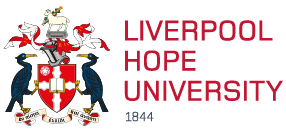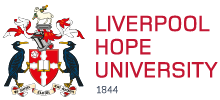Graphic Design BA (Hons) (with Foundation Year)
 Graphic Design.jpg)
UCAS Code: W221|Duration: 4 years|Full Time|Creative Campus
UCAS Campus Code: L46
Work placement opportunities|International students can apply|Study Abroad opportunities
About the course
Our Graphic Design course blends traditional practices with future trends in the Creative Industries. Our teaching focuses on problem-based, ‘in-studio’ learning. We introduce themes and issues through lectures and briefings. This degree helps graduates meet industry needs. It connects education with professional expectations.
Thanks to our connection with Adobe, we stay updated on design trends and future software releases. This keeps our degree programme relevant. You’ll also have the chance to become an Adobe Certified Professional during your studies.
At Liverpool Hope, you’ll join a lively creative community. We know all our students by name. You’ll build inspiring and supportive relationships with your tutors. They'll support your creative thinking and help you become a great graphic designer. Our staff are researchers and professional designers with notable publication and exhibition records. We leverage this experience and our professional networks to support you in your studies and future career.
Most of our graduates work in studios, while others choose freelancing or aim to start their own businesses. Our programme also serves as a great stepping stone for teaching or further study.
Liverpool is famous for its culture and humor. At Liverpool Hope, you can engage with Tate Liverpool, Everyman & Playhouse Theatres, Royal Liverpool Philharmonic, The Bluecoat contemporary arts centre, and more.
The Creative Campus is just a short walk from the heart of one of the most exciting cities in the world.
Course structure
Teaching on the graphic design course is structured into lectures for all students, seminars with smaller groups of around 15–20 students, and tutorials that typically include no more than 10 students. You also have the opportunity for a one-to-one meeting with your tutor each week.
In the first year of the graphic design course, there are approximately 13 teaching hours each week, reducing to around 12 hours in the second year and approximately 10 hours in the third year.
In addition to teaching hours, you are expected to dedicate time to independent study each week, as well as group study to prepare for any collaborative assessments.
Assessment and feedback
Throughout the three years of the graphic design course, you will complete a range of assessments, including written exams, practical exams, portfolios, journals, and coursework.
You will receive detailed written feedback on all assessments and have the opportunity to discuss this feedback in more detail with your tutor.
Foundation Year
The Foundation Year is a great opportunity if you have the ability and enthusiasm to study for a degree, but do not yet have the qualifications required to enter directly onto our degree programmes. A significant part of the Foundation Year focuses upon core skills such as academic writing at HE level, becoming an independent learner, structuring academic work, critical thinking, time management and note taking.
Successful completion of the Foundation Year will enable you to progress into the first year (Level C) of your chosen honours degree. Further details can be found here.
Year One
Foundations in Graphic Design
In the graphic design course, you will be introduced to the scope of contemporary graphic design. Through a series of practical studio projects, you will explore the relationship between word, image, colour, layout, composition, and meaning. This thematic block, Introduction to the Principles of Graphic Design, is supported and informed by three other blocks: Digital Literacies for Graphic Design, Graphic Design Histories and Contexts, and Design Fundamentals.
Digital Literacies for Graphic Design provides a range of learning opportunities to develop and consolidate professional-level awareness of current and emerging digital technologies used in the Creative Industries.
Graphic Design Histories and Contexts is delivered through lectures and seminars, introducing key themes and issues in art, design, and socio-economic history.
Design Fundamentals is delivered through a series of workshops focusing on practical skills such as Drawing for Graphic Design, Applied Colour Theory, Introduction to Printmaking, and Introduction to Photography.
Year Two
Explorations in Graphic Design
In the second year of the graphic design course, you will use the technical and theoretical tools you have acquired to begin problem-solving in a range of contexts, including live briefs. Practical studio work is directly supported by the Applied Software and Production and Theoretical Studies for Graphic Design elements.
The Applied Typography and Visual Language element focuses on the core principles of typography, layout, and meaning. You will make theoretical and conceptual connections between studio work and the Theoretical Studies for Graphic Design, which includes lectures and seminars on Typography and Layout, and Branding and Re-branding.
The Applied Software and Production element consolidates your knowledge and skills in Adobe Illustrator in preparation for the Adobe Certified Professional exam. In addition, you will learn about graphic design production processes.
Year Two also introduces the Professional Practice element. This challenges students to investigate and build pathways to employment, self-employment, or further study. The element begins with a survey of job prospects in the Creative Industries and introduces students to Liverpool Hope University’s e-Learning Hub, highlighting micro-courses on employability, career planning, and interview techniques.
Year Three
Advanced Studies in Graphic Design
In the final year of the graphic design course, you will consolidate your understanding of both theoretical and practical principles of graphic design by creating a distinct body of work. This work can be used as a professional graphic design portfolio aligned with your individual interests and career ambitions. Projects may include live briefs, competition briefs, self-initiated design, and further explorations of the Adobe Certified Professional curriculum.
The final year also allows you to enhance your career planning through deeper engagement with Professional Practice, where students are encouraged to develop a guide for career progression after leaving Liverpool Hope University.
In the Art Direction element, students apply methods for interpreting and evaluating contemporary graphic design practice. Lectures and seminars explore how meaning is generated as both a product of design intention and audience perception. The Art Direction lecture series also includes presentations of Art Directors’ portfolios, case studies in graphic design, and allied creative industry projects.
The Graphic Design Research block provides students with the opportunity to focus on their particular interests while aligning their work with career ambitions within the field of graphic design.
Entry requirements
There may be some flexibility for mature students offering non-tariff qualifications and students meeting particular widening participation criteria.
Careers
Graduates of the graphic design course have access to a diverse range of career pathways, including design for print, user interface design, motion graphics, illustration, and editorial work.
The graphic design course equips you with the skills needed to explore a variety of career options within the wider creative industries. Opportunities for further study and postgraduate research are also available, including PGCE and taught Master’s programmes.
Enhancement opportunities
Work Placement Opportunities
In your second year, you have the option to go on a work placement to experience graphic design in the real world. The work placement will greatly enhance your learning experience and employability opportunities once you graduate.
SALA
The Service and Leadership Award (SALA) is offered as an extra-curricular programme involving service-based experiences, development of leadership potential and equipping you for a career in a rapidly changing world. It enhances your degree, it is something which is complimentary but different and which has a distinct ‘value-added’ component. Find out more on our Service and Leadership Award page.
Study Abroad
As part of your degree, you can choose to spend either a semester or a full year of study at one of our partner universities as part of our Study Abroad programme. Find out more on our Study Abroad page.
Tuition fees
The tuition fees for the 2026/27 academic year are £9,535* for full-time undergraduate courses.
If you are a student from the Isle of Man or the Channel Islands, your tuition fees will also be £9,535*.
The University reserves the right to increase Home and EU Undergraduate and PGCE tuition fees in line with any inflationary or other increase authorised by the Secretary of State for future years of study.
*subject to Council approval.
Additional costs
You will also need to consider the cost of your accommodation each year whilst you study at university. Visit our accommodation pages for further details about our Halls of Residence.
Scholarships
We have a range of scholarships to help with the cost of your studies. Visit our scholarships page to find out more.
International tuition fees
The International Tuition fees for 2026/27 are £14,500.
Visit our International fees page for more information.
Course combinations
With Foundation year, this degree is only available to study as a Single Honours course.


